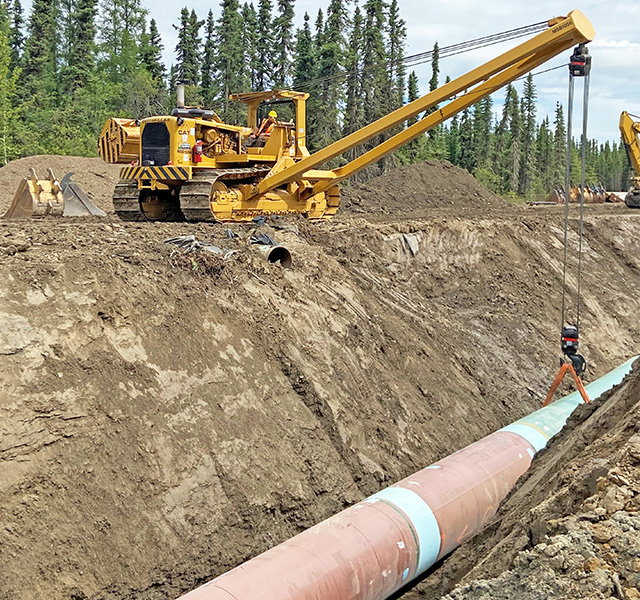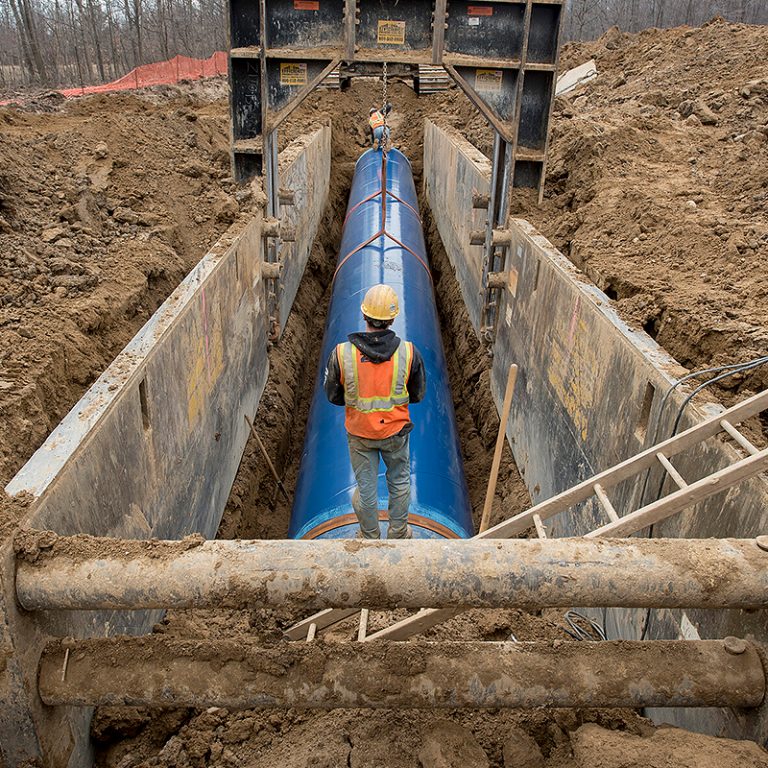A Comparison of Pipe Materials With Help From Creek Pipe Company
Wiki Article
What You Need To Understand About Pipe Trenching Providers: A Comprehensive Summary of Available Options
Pipe trenching solutions are vital for the installment and maintenance of below ground energies. They include different approaches customized to certain demands and settings. Recognizing these methods is essential for efficient task implementation. Each choice provides its very own set of benefits and challenges. As the need for reliable utility management increases, recognizing what to think about when choosing a trenching service becomes imperative. What variables should one focus on to ensure success?Understanding Pipe Trenching: What It Is and Why It Issues
Although usually ignored, pipe trenching is a vital process in numerous building and utility jobs. This strategy involves excavating slim trenches to help with the installment of pipelines for water, gas, sewer, and telecommunications. The value of pipe trenching exists in its duty in guaranteeing that these essential systems are appropriately integrated into framework, allowing the secure and efficient distribution of necessary services.Proper trenching is essential for preserving the integrity of pipelines and lessening risks associated with soil erosion and collapses. It additionally enables for effective evaluations and upkeep of below ground energies. Additionally, understanding the regional guidelines and ecological factors to consider is important, as inappropriate trenching can lead to costly delays and legal problems. Inevitably, pipeline trenching acts as the fundamental action that supports various construction undertakings, making it a significant aspect of modern infrastructure development.
Common Trenching Approaches for Below Ground Energies
In the domain name of below ground utilities, different trenching techniques play a crucial function in setup and maintenance - Creek Pipe Texas oilfield. The open-cut trenching technique, directional uninteresting method, and hydro excavation process each offer distinct advantages depending on the specific project requirements. Understanding these methods is vital for efficient and efficient utility monitoringOpen-Cut Trenching Approach
Open-cut trenching is an extensively used technique for mounting below ground utilities, especially when the depth and width of the trench permit effective access. This technique includes excavating a trench along the recommended path of the utility, offering direct presence and ease of access for installation. It is specifically advantageous for jobs that need extensive excavation, as it assists in fast installment and examination. However, it also necessitates careful preparation to reduce disturbance to the surrounding location, consisting of web traffic and existing structures. Open-cut trenching is most efficient in open areas where the dirt problems are desirable, however it might be limited in metropolitan environments because of the visibility of existing utilities and various other below ground obstacles.Directional Boring Method

Hydro Excavation Process
How does hydro excavation stand apart among typical trenching techniques for below ground energies? Hydro excavation makes use of high-pressure water and vacuum cleaner modern technology to securely get rid of dirt, enabling precise digging around sensitive underground energies. This approach minimizes the risk of damaging existing framework compared to conventional mechanical excavation. By utilizing water to loosen the soil, hydro excavation provides a much less intrusive strategy, reducing the potential for dirt compaction and making certain a cleaner worksite. In addition, the procedure improves visibility during excavation, boosting total precision and performance. Hydro excavation is specifically beneficial in urban locations where energy lines are densely packed, making it a recommended choice for service providers focused on safety and security and precision in below ground jobs.Advantages of Trenching Providers
While different methods exist for installing below ground utilities, trenching solutions use unique benefits that make them a favored choice for several jobs. One significant advantage is the cost-effectiveness of trenching, as it commonly needs less customized equipment contrasted to options like hydro excavation. This often causes lower labor and functional expenses. In addition, trenching can fit a wide variety of utility kinds, including water, drain, and gas lines, providing convenience for contractors.Moreover, trenching permits reliable access to numerous lines in a single excavation, decreasing interruption to the surrounding area. The procedure likewise makes it possible for accurate installment and fixing, which is important for adhering to regulative requirements and ensuring long-lasting integrity. Ultimately, trenching can be carried out relatively swiftly, lowering project timelines and permitting faster solution restoration. These advantages jointly make trenching solutions a practical choice for lots of below ground utility jobs.Negative aspects and Challenges of Trenching
Despite the many benefits of trenching solutions, there are notable drawbacks and difficulties that have to be considered. One significant difficulty is the possibility for dirt instability, which can lead to cave-ins, posing dangers to workers and devices. Furthermore, trenching can interfere with existing energy lines, demanding mindful planning and coordination to avoid service disturbances. The procedure can likewise be time-consuming, particularly in city areas where room is limited and gain access to is restricted. In addition, trenching might call for extensive permits and regulatory conformity, including intricacy and prospective delays to jobs. Environmental issues, such as soil disintegration and damages to local communities, can occur from improper trenching techniques. The prices connected with trenching, including labor and tools, can rise if unforeseen issues develop during the task, making it crucial for stakeholders to evaluate these challenges versus the benefits when considering trenching solutions.Secret Factors to Take Into Consideration When Selecting a Trenching Service
Picking the right trenching solution can considerably impact the success of a task. Several vital elements need to be evaluated to guarantee an ideal choice. The firm's experience and competence in trenching procedures are important; a reputable solution with a strong track record is usually extra reliable. Next, examining the tools used is essential, as contemporary equipment can enhance efficiency and accuracy. In addition, it is considerable to consider the series of solutions supplied, consisting of excavation deepness and dirt kind handling, to verify they fulfill particular project requirements.Another factor to testimonial is the firm's reputation; customer evaluations and testimonials can supply insights into previous performance. Getting thorough quotes that detail expenses and timelines will help in budget plan management. Verifying conformity with neighborhood laws and market requirements is crucial for avoiding possible lawful concerns. By reviewing these aspects, clients can make an informed choice when choosing a trenching service.Security Measures in Pipe Trenching
In pipe trenching, precaution are essential to making certain employee security and website integrity. Secret parts consist of making use of individual safety equipment, detailed excavation site inspections, and well-defined emergency situation feedback procedures. Implementing these actions considerably reduces threats associated with trenching procedures.Personal Safety Equipment
Safety and security in pipeline trenching heavily depends on the proper usage of personal safety equipment (PPE) Employees need to put on hard hats to shield against falling things, in addition to high-visibility vests to boost their visibility on-site. Steel-toed boots are crucial for foot protection against hefty equipment and products. In addition, gloves are necessary for hand security, specifically when dealing with harsh or sharp objects. Respirators might additionally be required in settings with dust or hazardous fumes. Eye defense, such as safety and security goggles, ought to be put on to shield against particles. Ultimately, hearing defense is crucial in noisy work environments. By sticking to PPE guidelines, workers can significantly decrease the risk of injury and ensure a more secure trenching operation.Excavation Website Inspection
Effectively checking the excavation site is a basic action in assuring a risk-free pipeline trenching operation. This process includes reviewing the site for possible hazards such as below ground utilities, unsteady dirt conditions, and nearby frameworks. A comprehensive evaluation enables the recognition of dangers that might endanger employee safety and security. In addition, validating the dirt kind and dampness levels can Creek Pipe HDPE installation help figure out ideal shoring approaches to avoid trench collapses. It is vital to guarantee that the site is free from particles which proper signs is presented to inform workers of continuous operations. Normal examinations throughout the task can likewise help detect any kind of adjustments in site conditions, making it possible for prompt adjustments to precaution and job protocols.
Emergency Action Protocols
Emergency action protocols are crucial in mitigating dangers related to pipeline trenching procedures. These procedures assure that all personnel are prepared to act promptly and efficiently in emergencies. Crucial element include normal security drills, clear communication networks, and marked fire escape. In addition, first-aid sets and emergency get in touch with numbers need to be readily easily accessible on-site. Trenching operations should additionally include procedures for managing hazardous circumstances, such as collapses or energy strikes. Training workers on identifying potential risks and comprehending their duties throughout an emergency is vital. Moreover, preserving an updated website safety and security strategy can greatly enhance reaction effectiveness. Overall, efficient emergency situation preparedness fosters a much safer working environment and reduces the effect of unforeseen occurrences.Price Factors To Consider for Trenching Services
Comprehending the monetary ramifications of trenching solutions is crucial for project preparation and budgeting. The costs connected with trenching can vary extensively based upon several elements, including project size, soil kind, and deepness of the trench. Labor expenses commonly stand for a considerable part of the overall expense, as competent operators are required for effective execution. Additionally, tools service charges can add to the general budget plan, particularly for specialized machinery.Site access is an additional vital element; difficult terrain may necessitate additional resources, increasing costs. Permitting and regulatory compliance can also contribute to expenses, particularly in city locations where regulations are stringent.Lastly, unanticipated difficulties, such as running into existing energies, can result in unexpected costs and hold-ups. Consequently, getting detailed price quotes from reputable trenching service carriers is necessary for precise budgeting and guaranteeing successful task completion.Frequently Asked Questions
How Lengthy Does a Common Pipe Trenching Project Take?
The period of a normal pipeline trenching job varies substantially based on elements such as depth, dirt conditions, and job complexity. Usually, it can take anywhere from a few days to several weeks to finish.What Devices Is Typically Made Use Of in Pipe Trenching?

Exist Environmental Regulations for Trenching Activities?
Environmental guidelines for trenching activities usually call for conformity with neighborhood, state, and government guidelines. These policies intend to reduce ecological disruption, secure water sources, and guarantee appropriate waste administration during excavation and installation processes.
Can Trenching Services Be Combined With Various Other Building And Construction Tasks?
Trenching solutions can indeed be incorporated with numerous building jobs. By collaborating efforts, efficiencies can be attained, decreasing disturbances while making sure that all needed facilities job is finished in a timely and affordable manner.
What Are Usual Dirt Enters Experienced in Trenching?
Typical soil types encountered in trenching include clay, sand, silt, and loam. Each type presents special obstacles, affecting excavation techniques and stability, requiring mindful preparation to guarantee safe and efficient trenching procedures.Report this wiki page